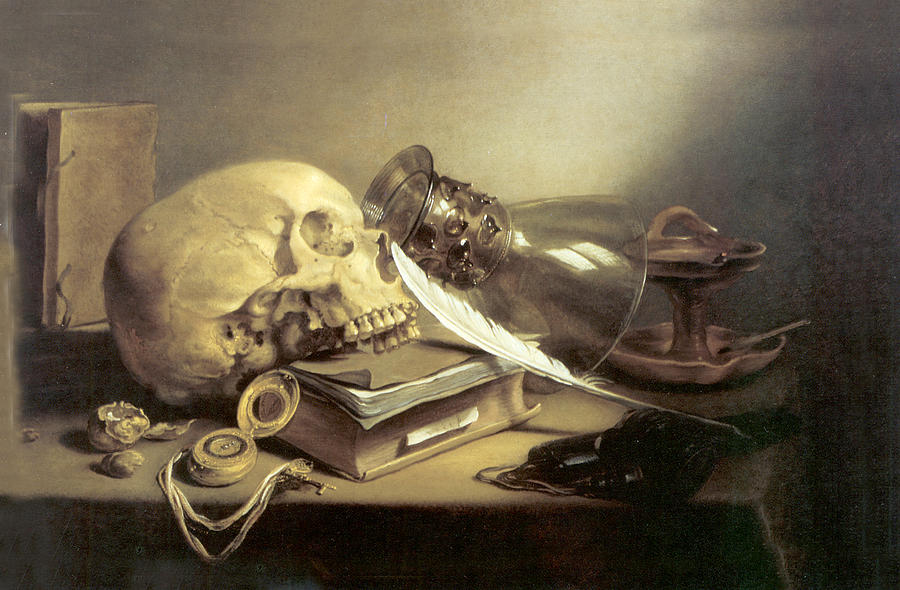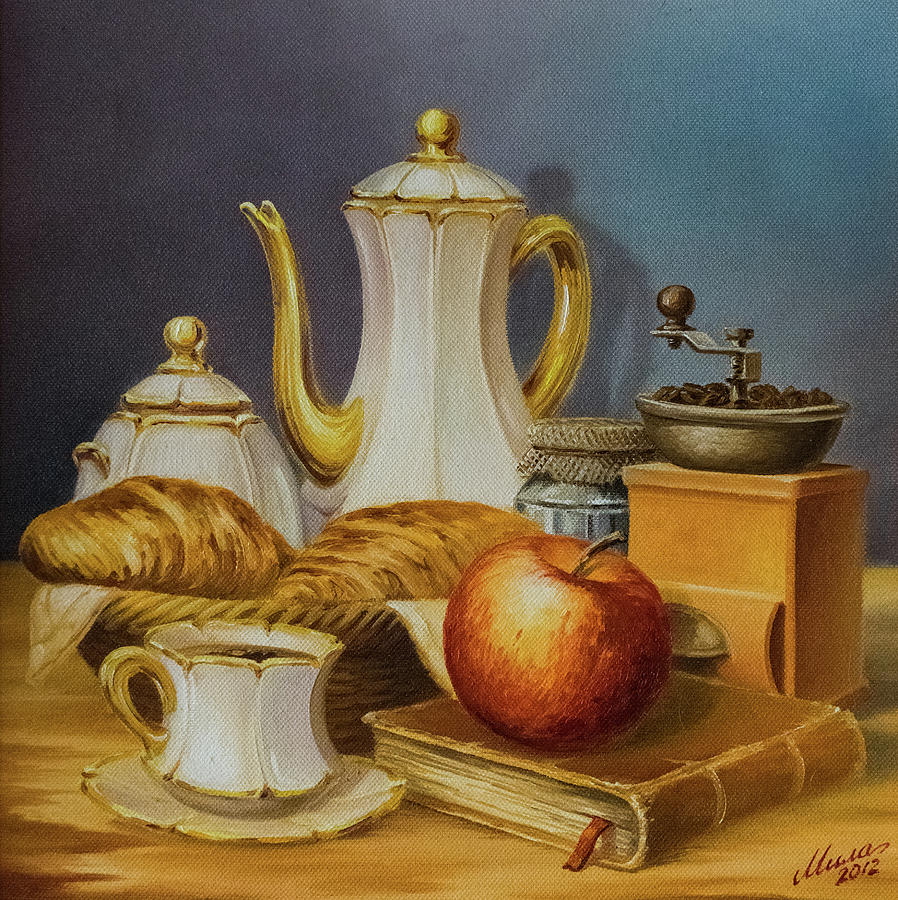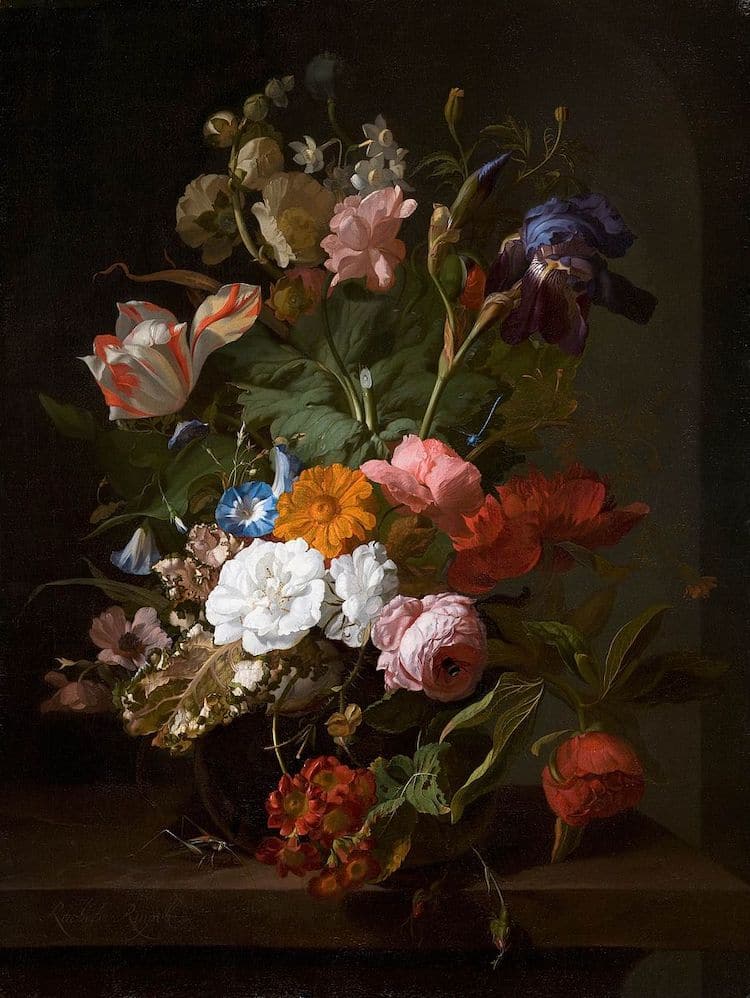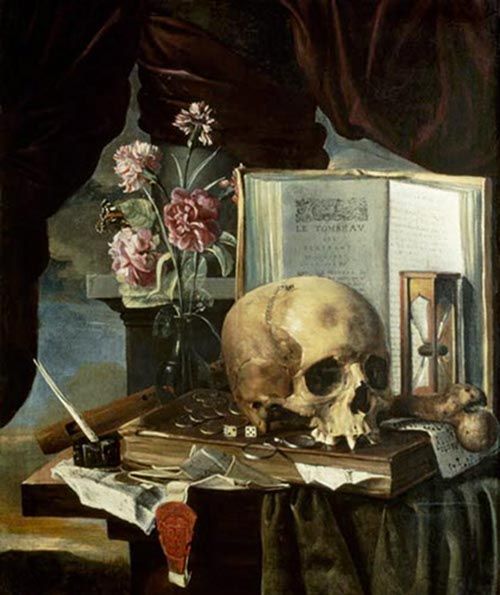Still-Life became an independent, and popular, genre of paintings in the early 1600’s, in Dutch and Northern Europe. This new form of Dutch art started to become renowned for being highly concerned with Khar (close scrutiny of the natural world). The objects showcased within the frame are considered symbolic of religion and morality which reflects the culture the artist is in. The symbolism is shown through different objects such as burnt candles, human skulls, dying flowers, fruits and vegetables, broken chalices, jewellery, crowns, watches, mirrors, bottles, glasses, vases and many more; these objects usually symbolise death, human life, power, beauty and wealth. As mentioned previous, still-life is the composed portray of objects, this topic was considered broad and the objects were soon condensed into sub categories, due to the object and the symbolic representation that the object holds.
Flower Piece
Culturally, many towns, such as Amsterdam; Utrecht, specified in flower pieces, which were highly regarded and the artists where well paid, which illuminates the socio-economic status of the towns which specialised in this form of still-life art. The flowers within the painting were realistic, but the arrangement of the flowers were not, some artists would place all four season flowers within one bouquet. Around the 1620’s this form of still-life was soon showcasing butterflies and snails, which evolved the symbolism of the imagery to showcase freed after death. The flowers themselves symbolised the language of flowers and a contemporary view: for example the Madonna lily , which was white, showcased purity and the Virgin Mary, outlining the importance of religion during this time.

Fruit and Flowers
Fruit could often be seen within a floral composition. Items such as oysters and mussels showcased the vanities overtones of the brevity life, and could sometimes be seen as the artists erotic implications. In addition, the fruit also has religious aspects such as an apply symbolising temptation and a grape showing the blood of christ.
Breakfast
This form of still-life imagery first came about in Haarlem and Amsterdam were the orientation of the canvas turned to landscape in order to accommodate the background of a table, having the table top reach from one edge to the other. The food used was simplistic, cheese, fruit and nuts, and often presented as half eaten to show realism within the art work. In early forms of this category the composition looked at the table from a birds eye view, however the view point has now been lowered.

Vanitas Painting
This category showcased the ideology that we only live for a short time, and nothing lasts forever, raising societies awareness of death did not disappear with the end of the Twelve Year Truce (In 1620 the Republic suffered two major outbreaks of the bubonic plague). A reoccurring motif within this form is a skull, which symbolises death and mortality clearly to viewers. A sense of time can also be shown through hour glasses and watches, to represent the ideology that time is short.
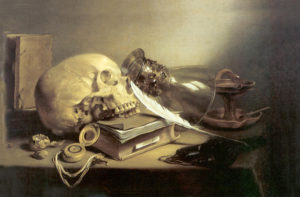
Curtain
Within this form lies two types of curtain painting: wrapped theatrical, pulled to one side and sometimes knotted up, and a curtain suspend from a rod above the window. The curtains where usually painted blue and green. This became popular as it represent the time period were the Dutch use to hide the still-life paintings behind curtains. This motif was originally showcased by Rembrandt who painted the ‘Holy Family’ in 1646.

Letter Racks, Quodilbets, Cupboards and Peepshows
This motif was first presented and initiated by artist Samuel Hoogdtraten, were he painted a few red ribbons pinned onto a board containing snap shots of socially informative letters, this was entitled ‘The Letter Rack’. A quodlibet is latin for “what you like”, which used a letter rack showcasing a personal items such as combs, pens and bills. This form often had links with curtains, hiding the items behind creating a double meaning towards the final outcome.

Trompe L’Oeil with Hunting Equipment
Anthonie and Johannes Leemans developed a new specific composition to still-life. Within the imagery presented they did not focus on the hunting or the success, but the trapping and killing of the animals. This form of Trompe L’Oeil also showed the would-be hunting equipment ready to use.
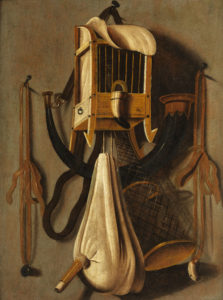
Pronk
As the 16th century continued the socio-economic status of cities increased, which mean that better equipment and paint could be purchased in order to produce higher quality work. The pigment of the paint was also high quality, lapis lazuli, allowing paintings such as silver wear, jugs and other items as such to be painted.

Mood Boards Showcasing Contextual Examples of Still Life.

